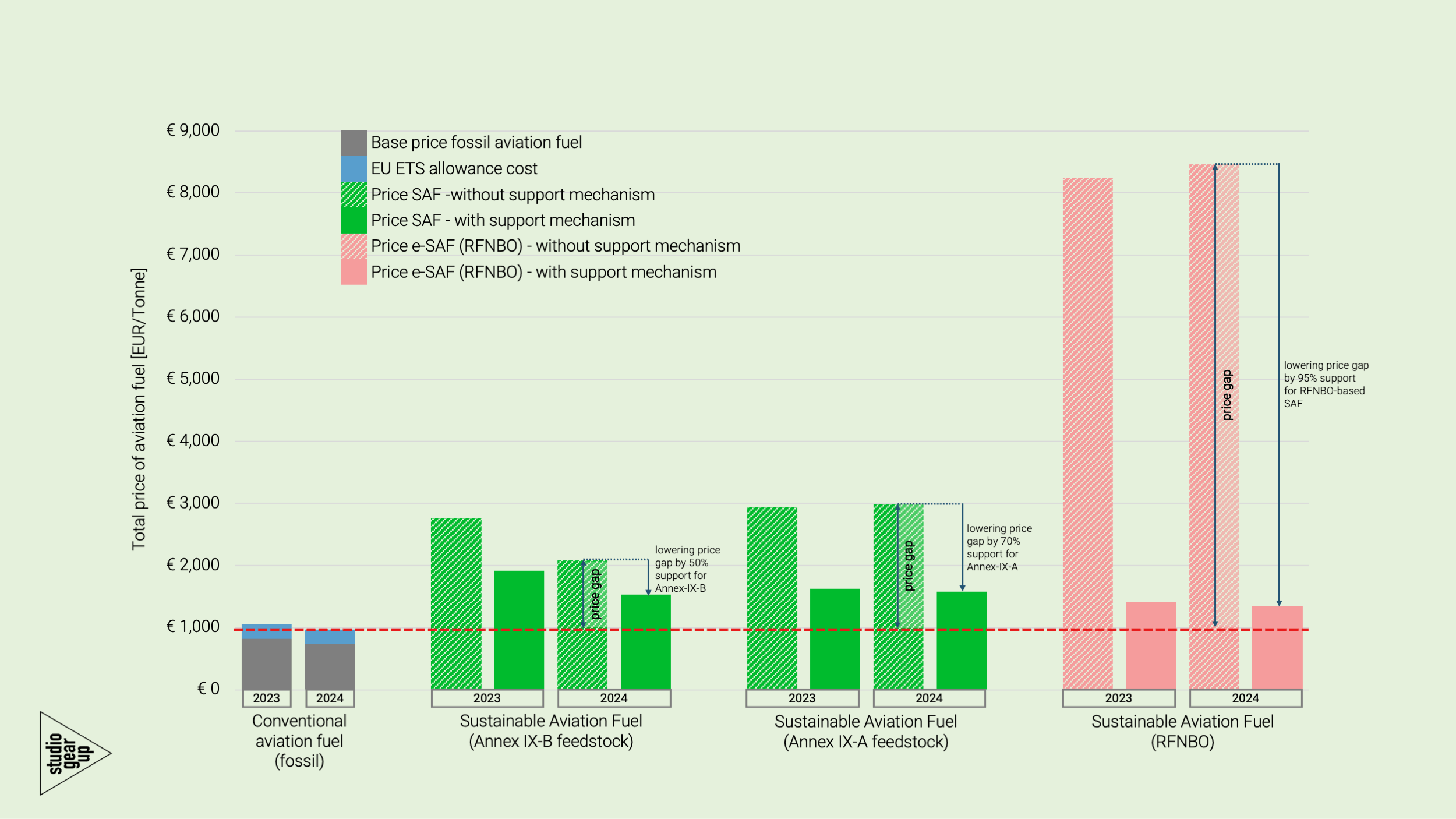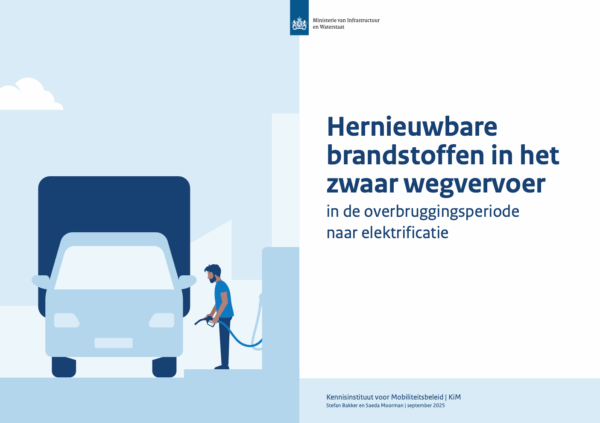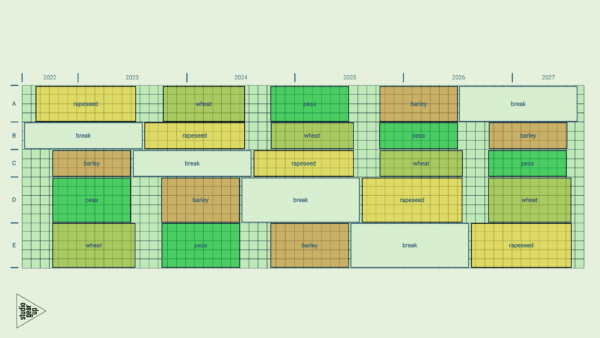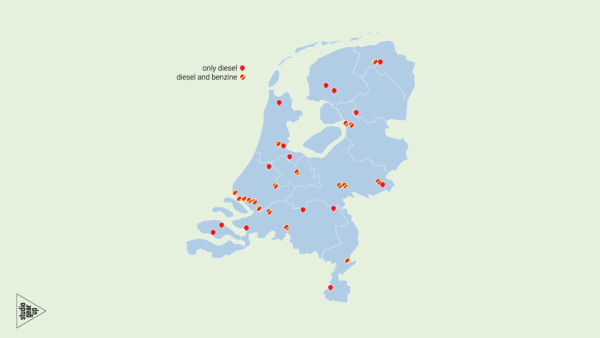April 2024, studio Gear Up published an analysis in which we reviewed the new support mechanism for Sustainable Aviation fuels (EU-SAF allowances, in regulatory terms: Fuels Eligible under ETS – FEETS) , based on 2023 prices as presented in an EASA 2024 report. (see our previous report here). We critically assessed the expected impact of the policy instrument on supporting the development of SAF market.
In this July 2025 blog we present an updated analysis, using data from the EASA (2025) report with aviation fuels reference 2024-prices. to assess potential price movements and implications this may have for the SAF allowances (FEETS).
Download full article:
SAF allowances – 2024-price update
Our assessment of the SAF Allowances (FEETS) reveals that additional policy instruments are still required to support the EU-SAF market
In February 2025, the European Commission adopted a new support mechanism, commonly referred to as FEETS (Fuels Eligible for ETS), involving the setting aside of ‘SAF allowances’. These allowances will be used to bridge the price gap for the use of alternative fuels to accelerate the roll out of SAF.
We reviewed this mechanism in order to assess its expected impact on supporting the development of SAF market. We conclude that the policy design would require additional policy instruments to support the broader development of the SAF market. We summarise our assessment of the mechanism below:
- The support mechanism provides limited short-term support on the demand-side but lacks providing long-term investment security for SAF producers.
- The design of the policy instrument does not establish a level playing field for the alternative aviation fuel options: limiting the competitive pricing environment.
- The support instrument is high-cost relative to its emission saving potential, compared to potential savings achieved through awarding support to producers.
Recent price data reveals reduction in market price of aviation biofuels but main conclusions on the FEETS remain the same
From reviewing price information published by EASA (2025) on aviation fuel reference prices in 2024, we observe some significant price movements. As shown in the graph below, there was around a 25% market price reduction of aviation biofuels (Annex IX-B type), such as HEFA, from 2023 to 2024. Given these reduced 2024 prices, our updated analysis reveals that the FEETS could extend its level of support from approximately 1.7 to 2.7 million tonnes of aviation biofuels. However, to our assessment this still offers only short-term support, with the SAF allowance budget expected to deplete in the first half of 2028.
The price of conventional (fossil) aviation fuels was reported to have fallen by around 10% from 2023 to 2024. Furthermore, the report reveals a slight increase in the values reported for the production cost estimate of advanced aviation biofuels (Annex IX-A type) and e-SAF (RFNBOs). Despite these price movements, our analysis reveals there is still an unlevel playing field, with the support mechanism offering higher levels of financial support to synthetic aviation fuels, which leaves space for these producers of these fuels to maintain higher market prices while maintaining a competitive pricing position.

Comparison of the 2023- and 2024-price situation on the ‘price gap’ between various Sustainable Aviation Fuels (SAF) and fossil kerosene (consisting of base price of fossil kerosene and EU ETS allowance cost). Based on price data from form 2024 and 2025 EASA Report.
The analysis on the 2023-price data, published April 2025 is found here.




